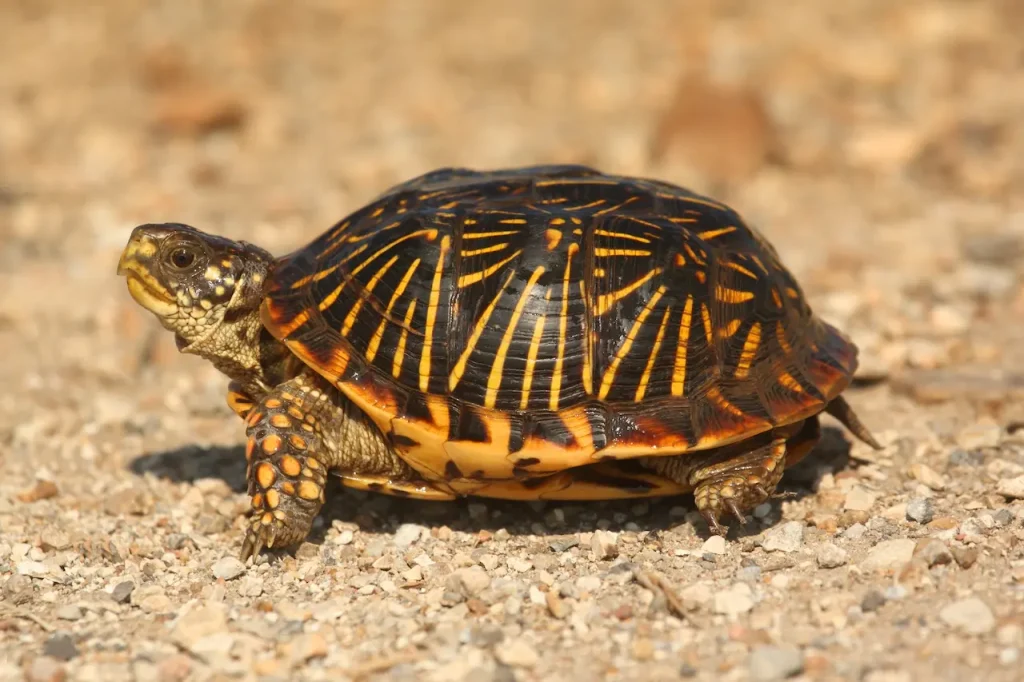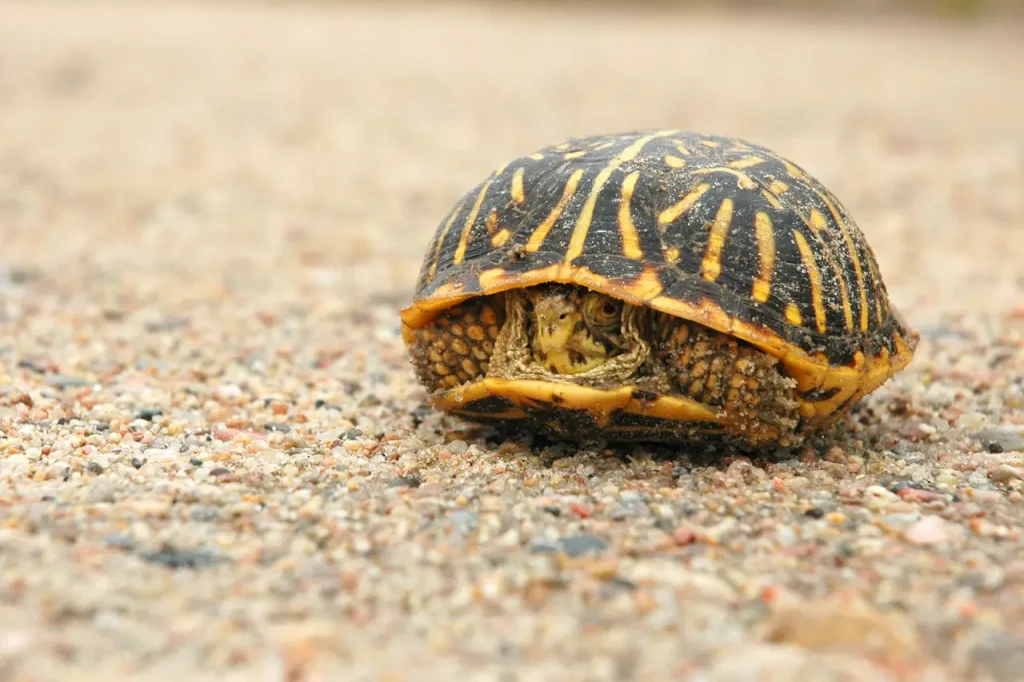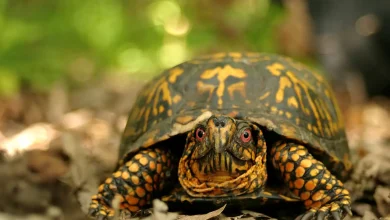Terrapene ornata is a species of box turtle commonly known as the Western Box Turtle.
Table of Contents

There are two different subspecies of Terrapene ornata:
- Ornate box turtle, Terrapene ornata ornata (Agassiz, 1857)
- Desert box turtle, Terrapene ornata luteola (Smith & Ramsey, 1952)
Distribution
U.S. states where wild western box turtles live: Arizona, Arkansas, Colorado, Illinois, Indiana, Iowa, Kansas, Louisiana, Missouri, Nebraska, New Mexico, Oklahoma, South Dakota, Texas, Wisconsin, Wyoming
Mexican states where wild western box turtles live: Chihuahua, Sonora
Western box turtles are found in central and western United States and the adjoining areas of northern Mexico. You can find them from the Rocky Mountains to the Mississippi, in the Sonora Desert and northwards up to South Dakota and Wisconsin.
The ornate box turtle (Terrapene ornata ornata) is found throughout most of the species range and inhabits a region that stretches from Wisconsin and western Indiana to Louisiana and eastern Texas. The northernmost specimens live in the southern part of Wisconsin.
As the name suggests, the desert box turtle (Terrapene ornata luteola) is adapted to arid conditions. It is found in dry areas of western Texas, New Mexico, south eastern Arizona and northern Mexico. In Mexico, its range includes the northern parts of Sonora and most of Chihuahua
Western Box Turtle Habitat
Western box turtles live on prairies and in deserts, depending on subspecies. It usually spends it whole life in a small area (less than few acres). In the fall, the western box turtle will dig a shallow hole to hibernate in during the winter.
The ornate box turtle (Terrapene ornata ornata) is chiefly a prairie creature. It can enter forests, especially along streams, but it is chiefly found on treeless sandy plains and grasslands with scattered low bush vegetation.
The desert box turtle (Terrapene ornata luteola) is adapted to more arid conditions and is found on the desert fringe. Of all the the box turtles in the world (not just Terrapene ornata), the desert box turtle is the one that inhabits the driest areas.
Body

The carapace of the western box turtle is less domed than that of other box turtle species and it looks a bit flattened. For both sexes, the length of the carapace can exceed 15 centimeters. The coloration of the carapace is usually black or dark brown with yellow striping. The desert box turtle tend to display more striping than the ornate box turtle.
Most male western box turtles reach sexual maturity when their plastron is 10-11 cm long. For females, the number is 11-13 cm. Males are usually 8-9 years old at this point, while females normally do not reach sexual maturity until they are 10-11 years of age.
What does an Western Box Turtle eat?
In the wild, the western box turtle chiefly lives on insects, spiders, worms, carrion and berries. It is known to catch beetles, grasshoppers and caterpillars.
How old can an Western Box Turtle get?
The maximum age of western box turtles in the wild remains unknown. One of the oldest known captive specimens was a female that exceeded 40 years of age.
Keeping Western Box Turtles as pets
For information about keeping western box turtles as pets, please see specific recommendations for the Ornate box turtle and the Desert box turtle since they live in very different habitats in the wild and therefore have very dissimilar requirements.
Please note that catching, buying or keeping a wild caught western box turtle (or a captive raised western box turtle without the proper documentation) may be illegal in your area.
References
- Yancey, Franklin R., II. 1997. Geographic Distribution. Terrapene ornata ornata. Herpetological Review 28 (2): 95
- Vinke, T. & Vinke, S. 2004. Keeping and breeding the Ornate Box Turtle, Terrapene ornata ornata. Reptilia (GB) (32): 25-30.
- Stebbins, R. 1985. A Field Guide to Western Reptiles and Amphibians. Houghton Mifflin Company. Estados Unidos.
- Rabb, George B. 1961. Natural history of the ornate box turtle, Terrapene ornata ornata Agassiz. Copeia 1961 (1): 123-124
- Philippen, H.-D. 2004. Box turtles of the genus Terrapene. Reptilia (GB) (32): 12-18
- Legler, John M. 1960. Natural history of the ornate box turtle, Terrapene ornata ornata Agassiz. University of Kansas Publications, Museum of Natural History 11 (10): 527-669
- Iverson, J. B. 1992. A Revised Checklist with Distribution Maps of the Turtles of the World
- IUCN Red List http://www.iucnredlist.org



